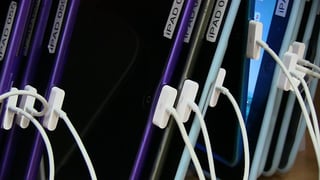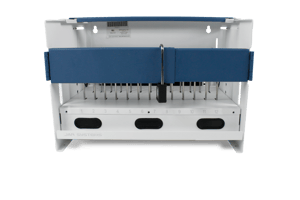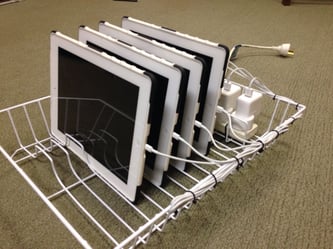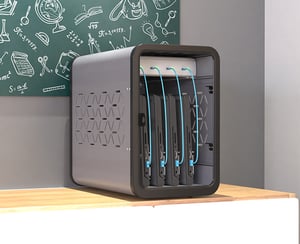Thanks to converging factors including great improvements in Wi-Fi infrastructure and the affordability of devices, schools across the country are moving closer and closer to achieving a one device per student ratio. Of those schools, many have chosen to allow their students to bring those Chromebooks, laptops, or tablets home with them at night and over the weekends. This affords many educational benefits and opportunities, however 1:1 take-home programs are not free of challenges.
The good news is, that with those increasing possibilities for enhancing education through technology, there continues to be better solutions for implementing and maintaining 1:1 devices. Technology in the classroom is on the rise in strategies and future planning for education and we don’t expect the traction to slow down anytime soon. Schools need innovative solutions that are scalable and affordable.
 The Uncharged Device Problem
The Uncharged Device Problem
When lesson plans are dependent on the use of technology, there has to be a solution for when devices are not ready for class. Students will often use their devices on the bus ride to school or at breakfast before their first class resulting in batteries having a reduced charge before the first class has even started. As devices age, this only becomes a greater issue. Additionally, it is an all too common occurrence that a student may forget to charge their device night before.
Devices that are uncharged for class time create issues, especially for the majority of schools that have only one device or fewer per student. It is important to have working devices but many classrooms, especially those in older buildings, are not equipped with enough accessible outlets for students to charge devices during class. Many schools find that they can address these issues with disciplinary actions and by encouraging student responsibility, but many also see that it remains a disruption that could be mitigated by providing the extra charging needed in the classroom.
Exploring the Options to Supplement Classroom Charging
Some technology departments still like to have charging carts in their 1:1 take-home programs because they find them to be convenient for doing mass device intakes over the summer or when doing routine maintenance, but it seems that most schools with this type of technology program do not feel that charging carts are a good fit for their needs. They take up more classroom space than other types of solutions and the capacity and, subsequently, the price tag simply are not a necessity in this case.
Charging lockers are great for being able to secure a device within a compartment to charge in the off periods of the day. Lockers give students ease of access because they can only take out their own laptop so there is no need for checking them out of a locked charging cart or station. This makes it convenient for students to let their devices charge while at lunch or in their gym or free period. As great as they are, lockers have a major down side of being pricey, $280 and up per device bay, and not all schools have the budget or space to install them.
 There are many charging stations available for about 10-16 devices that are great for simple wall-mounted, table top, and mobile charging solutions in the classroom. These provide a more affordable option for class-specific needs. They can also be a good option to store and charge "loaner" devices for students to check-out for the day from a central location like a media center. Still, many schools find that these do not exactly suit their in-classroom needs in a 1:1 take-home scenario because they do not require charging for that many devices at once or because they would either need to purchase extra charging cables to put in the stations or students would have to remember to bring their charger to school with them and then connect it to the charging station, which is not always simple.
There are many charging stations available for about 10-16 devices that are great for simple wall-mounted, table top, and mobile charging solutions in the classroom. These provide a more affordable option for class-specific needs. They can also be a good option to store and charge "loaner" devices for students to check-out for the day from a central location like a media center. Still, many schools find that these do not exactly suit their in-classroom needs in a 1:1 take-home scenario because they do not require charging for that many devices at once or because they would either need to purchase extra charging cables to put in the stations or students would have to remember to bring their charger to school with them and then connect it to the charging station, which is not always simple.

DIY stations can be a tempting solution and we have seen many schools pull it off, but there is still a question if they are worth it. The most common problems they pose is potentially being unorganized, or not allowing proper ventilation, etc., but also the cost of materials to construct adequate systems plus the labor involved can add up to more than one might expect. Power equipment is an important factor of 1:1 that needs to be invested in. Carts and charging bays need to be properly made to ensure that technology does not get damaged from over heating or electrical mishaps, along with being able to provide a way to secure the devices it contains.
New Solution for 1:1 Take-Home

JAR Systems has launched a new USB-C charging solution, designed to address the requirements of schools needing to augment their classroom charging options in 1:1 take-home technology programs.

